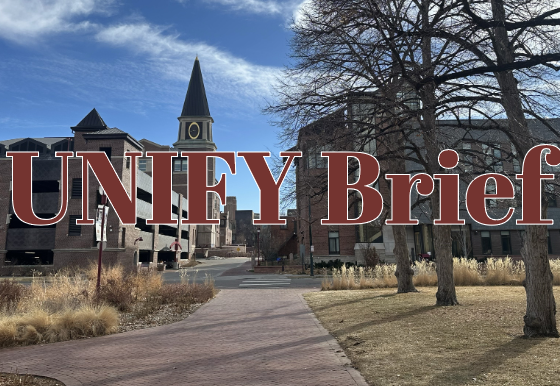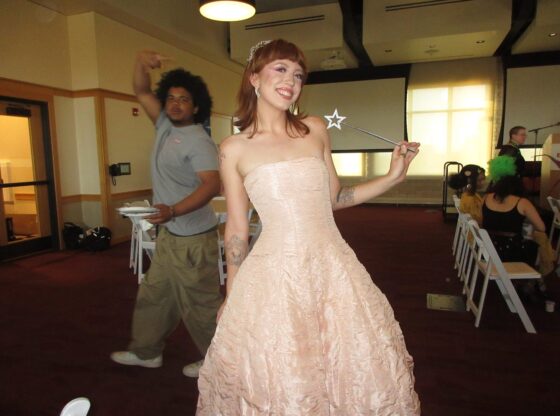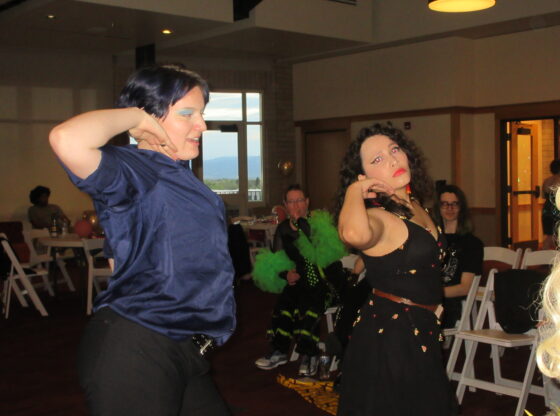Laurie Anderson showed the University of Denver yesterday that when a performer speaks, the very act of speaking becomes a performance in and of itself.
Anderson, with her characteristically close cropped spiky hair and spindly form, stood in the front of Lindsay Auditorium flanked by images of herself personified as alter egos: a small distorted man, as a talking parrot, and herself onscreen—Laurie Anderson the media presence.
One of the pioneers in performance art and electronic music, Anderson spoke to students and faculty yesterday as the final guest in the Leo Block series of visiting artists. Her work as an artist has spanned the media of film, video, music and CD-ROM. It has taken the form of installations as well as performances and has inspired artists in nearly all forms of media.
Conceptually, her work deals frequently with the notion of identity and alternate identities as well as other abstract ideas such as time, memory and writing.
Some of Anderson’s earliest experiments with identity involved using an audio filter to change her voice to that of a man, an experiment that later went on take form visually as a sort of digital clone.
“If I sounded significantly different I found that I had significantly different things to say,” said Anderson.
Discussing her history as a performance artist Anderson employed a lot of technology: video projectors, tape decks, and a laptop. Technology that was cutting edge when Anderson began her career in the 70’s now used as the dormant and unimpressive props of a seemingly “traditional” lecture. However, Anderson’s ability to integrate both audio and video seamlessly into her speech to the point where she seemed to be in conversation served as evidence of her years working with the media.
As a performer who works with technology Anderson acknowledges the general lack of physicality in most technology, and strives to build performance tools that combat the fleeing of the physical in the digital age.
“One of my commitments is to build things that are physical,” she told staff and students. “Some of the things that are being designed for laptop users are the same things that are being designed for paraplegics.”
Some of the tools that Anderson has built include variations on the traditional violin that use magnetic tape and playback heads instead of horsehair and strings and a musical stick that recalls a harpoon for a performance based around Moby Dick.
While Anderson creates many of the tools she works with, she is not altogether interested in creating new and revolutionary objects.
“I’m just interested in changing the function of existing forms, not creating elaborate new ones,” she said. For Anderson art is not about stuff, it is not about the object or the recording of an event, rather it is about “sneaking in through the senses.”
Anderson promises to showcase both her conceptual and physical agility as well as her sensory sneaking tonight during her sold out performance of “Happiness” at the Sturm Hall Auditorium at 7:30 p.m.










